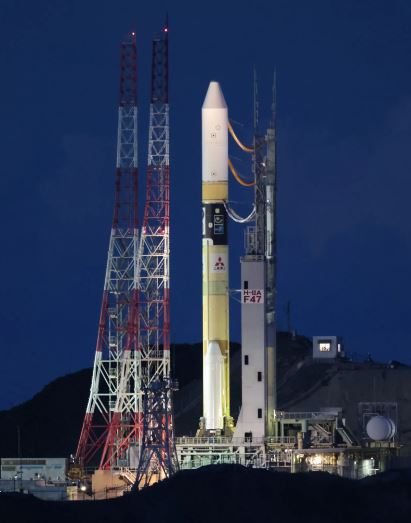The Japanese space agency JAXA is getting ready to launch two very different space missions from the same rocket: an advanced X-ray telescope that will investigate the universe’s hottest places and a little experimental robotic lunar lander. The tasks, however, will have to be postponed until the next day.
The X-ray Imaging and Spectroscopy Mission telescope is abbreviated XRISM. The SLIM mission aims to explore the moon and is thus named for its acronym. What follows is essential information on the missions.
On Sunday at 8:26 p.m. Eastern Time, an H-IIA rocket was scheduled to lift off from Japan’s Tanegashima Space Centre with XRISM and SLIM aboard.
As the countdown to launch entered its final stages, JAXA reported on its webcast that the launch had been postponed until the next day “due to inclement weather.” Despite JAXA’s earlier claim that conditions were “calm,” a post on X (formerly Twitter) by the company that built and operates the rocket used for the flight indicated that winds at higher launch site were safe launch.
The Saturday flight had already been delayed once due to bad weather. There has been no word from Japan’s space agency on when the next launch attempt will take place. However, the release is delayed until the 15th of September.
It’s a bus-sized telescope, literally. The Japanese Aerospace Exploration Agency (JAXA) is working with the United States’ NASA and the European Space Agency (ESA) on this endeavour. Because our atmosphere protects us from hazardous radiation, XRISM will examine cosmic X-rays, which can only be seen from space.
Changes in the luminosity of distant celestial objects will be measured by XRISM using cutting-edge spectroscopy. Some of the most extreme regions of the cosmos, such as the material whirling around black holes, the scorching plasma penetrating galaxy clusters, and the relics of exploding huge stars, will be revealed by this data.
Resolve is a crucial instrument on board XRISM since it will gather spectroscopic data with far higher resolution than X-ray observatories in Earth’s orbit. Cooling Resolve to within a few degrees above absolute zero allows the device to detect very small temperature fluctuations caused by X-rays striking its surface.
At the same time, a second device called Xtend will take pictures of the universe with a resolution similar to what humans would see with X-ray vision. Scientists will get two different but complimentary perspectives of the same X-ray sources thanks to Resolve and Xtend.
A small unmanned robotic spacecraft, SLIM was designed to settle on the moon. It launches at over 1,500 pounds and is about the size of a small food truck.
The lander isn’t really there to do science. Instead, the goal is to showcase a precision guidance system by landing within a football field’s length of the intended destination. Future spaceships may land much more conveniently on rough terrain that has scientific interest if improved landing technologies were developed.
The orbit of the space telescope around the Earth will be around 350 miles in diameter. After getting there, scientists will spend the next three months powering up the equipment and testing their functionality. Initial findings from this data are anticipated in around a year from the start of science activities in January.
SLIM’s journey to the Shioli crater on the near side of the moon will take some time. The spaceship will take a lengthy, circuitous route that will save fuel and take at least four months. In order to land on the moon, SLIM will spend a month in lunar orbit after taking many months to get there.

